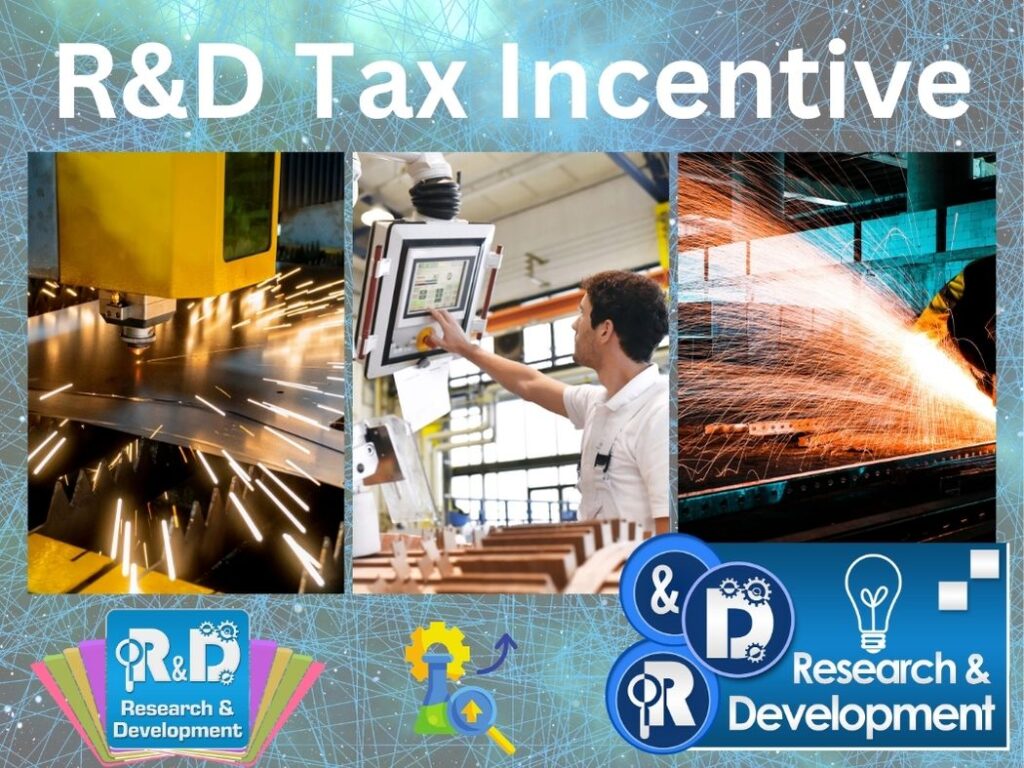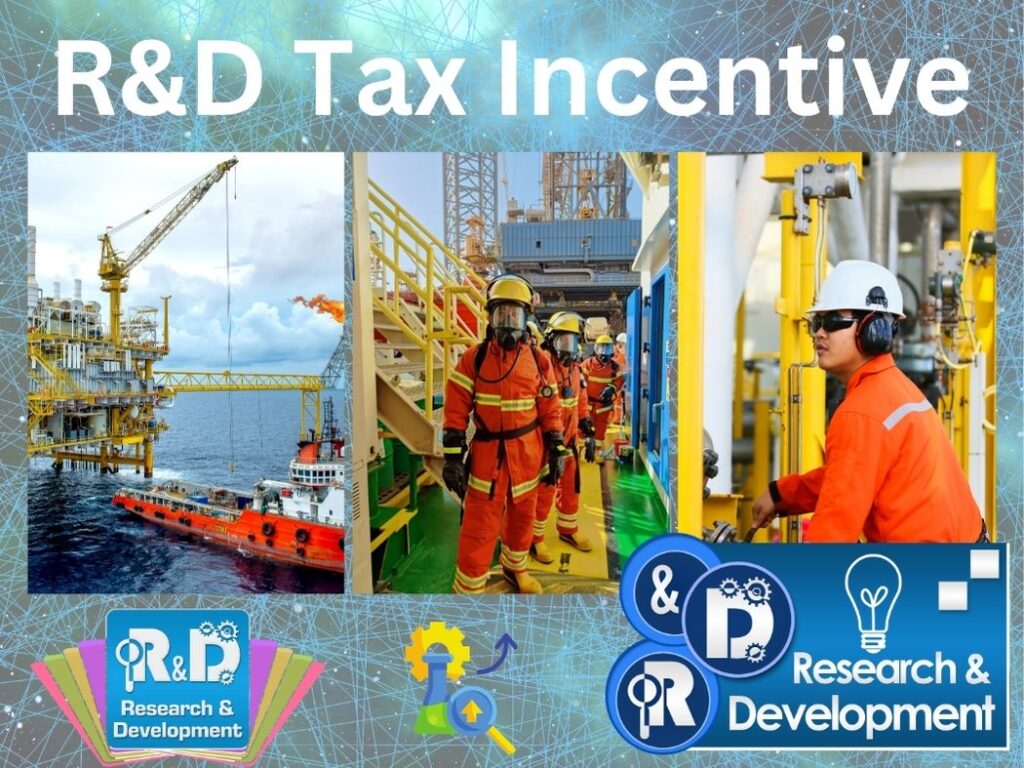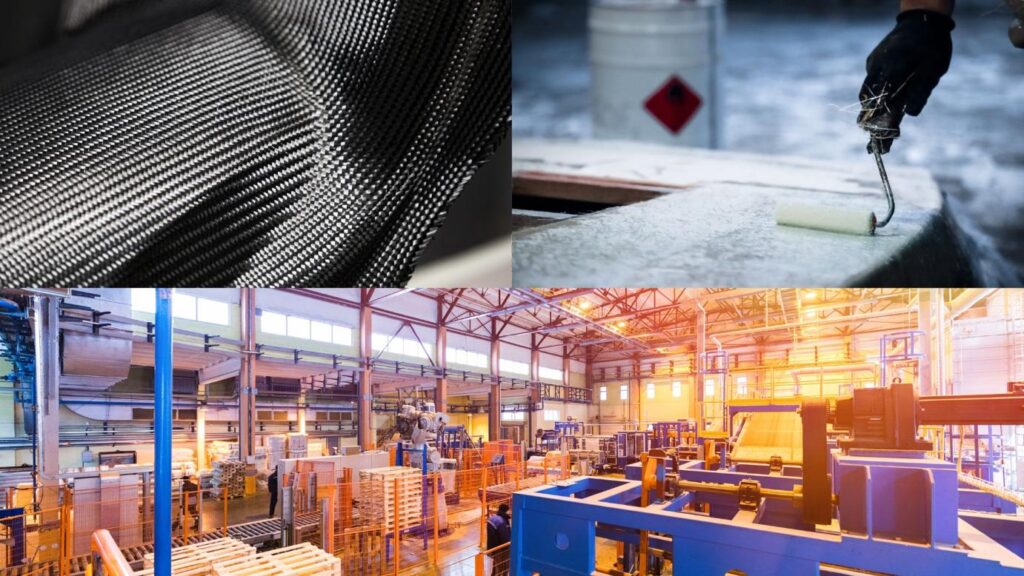R&D tax credit
Want to know the secret to getting 43.5% of your innovation costs back from the government? The R&D tax credit Australia program might be the most underused goldmine for Australian businesses. Most companies leave thousands on the table because they don’t understand how this system works. Here’s everything you need to know about claiming R&D tax credits in Australia – from eligibility rules to maximising your refund. We’ll break down the 2025 changes, show you exactly what qualifies, and give you the roadmap to claim every dollar you deserve.
Ever wonder why some businesses seem to innovate endlessly while others struggle with cash flow?
The smart ones know about the R&D tax credit.
They’re not just developing new products – they’re getting paid to do it.
What Makes This Guide Different? 🎯
Most guides give you the boring legal stuff. This one gives you the money-making strategies.
You’ll discover:
- How to turn your everyday business improvements into massive tax refunds
- The simple checklist that determines if you qualify (spoiler: you probably do)
- Real examples of companies getting hundreds of thousands back
- The deadline that could cost you everything if you miss it
Let’s dive in.
What Exactly Is the R&D Tax Credit Australia Program?
Think of it as the government paying you to be creative.
The R&D Tax Incentive is Australia’s biggest innovation support program. It’s designed to encourage businesses to take risks and develop new things.
Here’s how it works:
- You spend money on eligible R&D activities
- The government gives you back 43.5% (for small businesses) or 38.5% (for larger ones)
- You can get cash refunds even if you don’t pay tax yet
But here’s the kicker – most businesses think they don’t qualify.
They’re wrong.
The Numbers That Matter 💰
| Company Size | Tax Offset Rate | Type |
|---|---|---|
| Under $20M turnover | 43.5% | Refundable (cash back) |
| Over $20M turnover | 38.5% | Non-refundable (tax reduction) |
That means if you spend $100,000 on eligible R&D activities, you could get $43,500 back.
Not bad for doing what you’re already doing, right?

Who Actually Qualifies for R&D Tax Credits?
Most business owners think R&D tax credits are only for tech companies or scientists in lab coats.
Dead wrong.
The eligibility rules are much broader than you think.
The Three Simple Requirements ✅
Requirement 1: Be an Australian Company Pretty straightforward. You need to be registered in Australia.
Requirement 2: Spend at Least $20,000 on R&D This includes salaries, materials, contractor fees – anything related to your R&D work.
Requirement 3: Conduct Real R&D Activities This is where it gets interesting…
What Counts as R&D? (The List Might Shock You)
The government defines R&D as activities that:
- Generate new knowledge
- Solve technical problems
- Improve existing products or processes
- Have uncertain outcomes
Real Examples:
- Software developers creating new features
- Manufacturers improving production processes
- Restaurants developing new recipes or cooking methods
- Construction companies testing new building techniques
- Retailers building better inventory systems
See the pattern?
It’s not about being “sciencey” – it’s about solving problems with uncertain solutions.
Industries Getting R&D Tax Credits Right Now 🏭
| Industry | Common R&D Activities | Average Claim |
|---|---|---|
| Software Development | New features, algorithms, security improvements | $150,000 |
| Manufacturing | Process improvements, quality testing | $280,000 |
| Agriculture | New growing methods, equipment testing | $95,000 |
| Construction | Material testing, efficiency improvements | $180,000 |
Notice something? These aren’t rocket science companies.
They’re regular businesses solving everyday problems.
The 2025 Game-Changers You Need to Know About
The rules changed in 2025.
Some changes help you. Others could hurt if you’re not careful.
What’s New for 2025? 📅
The Bad News:
- Gambling and tobacco activities are now excluded (starting July 1, 2025)
- More compliance checks from the ATO
- Stricter documentation requirements
The Good News:
- Rates stayed the same (43.5% and 38.5%)
- Eligibility criteria didn’t get harder
- Online application process got easier
The Critical Deadline: If your financial year ended June 30, 2024, you have until April 30, 2025 to register your activities.
Miss this deadline? You lose the entire claim. Forever.
No extensions. No second chances.
Why This Deadline Matters More Than Ever ⚠️
Here’s what happens if you miss April 30:
Your $200,000 R&D spend becomes worthless. Your competitor who remembered gets $87,000 back. Guess who has more money to invest in growth?
The lesson: Set a calendar reminder right now.
Breaking Down the Money: How Much Can You Actually Get?
Let’s talk real numbers.
Small Business Example (Under $20M Turnover) 💵
Meet Sarah’s Software Company:
- Annual turnover: $5 million
- R&D expenditure: $300,000
- Tax offset rate: 43.5%
- Total benefit: $130,500
Since Sarah’s company is small, this comes as a cash refund. Even if they paid zero tax, they still get the full amount.
Larger Business Example (Over $20M Turnover) 🏢
Meet Mike’s Manufacturing Firm:
- Annual turnover: $50 million
- R&D expenditure: $800,000
- Tax offset rate: 38.5%
- Total benefit: $308,000
For Mike, this reduces his tax bill. If his tax bill was $500,000, it drops to $192,000.
The difference? Sarah gets cash in the bank. Mike saves on tax payments.
Both win big.
The R&D Intensity Bonus for Big Companies 🎁
Here’s where it gets interesting for larger businesses.
If your R&D spending is more than 2% of your total expenses, you get a bonus rate.
Instead of 8.5% premium above company tax rate, you get 16.5%.
Quick math:
- Company tax rate: 30%
- Normal R&D rate: 30% + 8.5% = 38.5%
- Bonus R&D rate: 30% + 16.5% = 46.5%
That’s an extra 8% on every dollar.
What Expenses Actually Count?
This is where most people get confused.
What can you claim? What can’t you?
The YES List ✅
Direct Labour Costs:
- Salaries of staff doing R&D work
- Contractors and consultants
- Directors’ fees (if they’re doing R&D)
Materials and Consumables:
- Raw materials used in R&D
- Software licenses for development
- Testing equipment
Other Costs:
- Utilities for R&D facilities
- Depreciation on R&D equipment
- Patent and IP costs
The NO List ❌
What You Can’t Claim:
- Marketing and sales activities
- Routine quality control
- Commercial production
- Activities with certain outcomes
The “At Risk” Rule: If the Australian government funds your R&D through grants, you can’t double-dip. You must reduce your claim by the grant amount.
Real-World Example: What Counts and What Doesn’t 📋
TechCo’s Development Project:
Qualifying expenses:
- Developer salaries for new feature: $80,000 ✅
- Cloud testing environment: $15,000 ✅
- Third-party security audit: $25,000 ✅
Non-qualifying expenses:
- Marketing the new feature: $30,000 ❌
- Routine bug fixes: $10,000 ❌
- Legal fees for contracts: $5,000 ❌
Total R&D claim: $120,000 Tax offset (43.5%): $52,200
See how this works?
The Step-by-Step Application Process (Don’t Mess This Up)
Getting your R&D tax credit involves two government departments.
Sounds complicated? It’s actually pretty straightforward if you know the steps.
Step 1: Register with DISR (The 10-Month Rule) 📝
What: Register your R&D activities with Department of Industry, Science and Resources When: Within 10 months of your financial year end Where: Through the online portal at business.gov.au
For June 30 year-end: Deadline is April 30 For December 31 year-end: Deadline is October 31
What you need:
- Detailed description of R&D activities
- List of eligible expenses
- Supporting documentation
Step 2: Claim in Your Tax Return (ATO Time) 💻
What: Complete the R&D Tax Incentive Schedule in your company tax return When: By your normal tax return deadline (October 31 for most) Where: Through your tax agent or online
Key documents:
- DISR registration confirmation
- Detailed expense records
- Supporting evidence
Step 3: Get Your Money (The Good Part) 💰
Small businesses: Cash refund processed within 60-90 days Large businesses: Tax reduction applied immediately
But here’s the catch – the ATO reviews about 30% of claims.
Make sure your documentation is bulletproof.
Industry Deep-Dive: What Qualifies in Your Sector?
Let’s get specific about what counts in different industries.
Software Development R&D Activities 💻
Definitely Qualifies:
- Building new algorithms or data structures
- Developing security features with uncertain outcomes
- Creating AI/machine learning capabilities
- Integrating complex third-party systems
Probably Qualifies:
- Significant user interface improvements
- Performance optimisation requiring research
- New database architectures
Doesn’t Qualify:
- Routine bug fixes
- Cosmetic changes
- Copying existing solutions
Real Example: A Perth software company spent $200,000 developing a new AI recommendation engine. They claimed $87,000 back because the technical approach was experimental.
Manufacturing R&D Activities 🏭
Definitely Qualifies:
- Developing new production processes
- Testing new materials or components
- Improving product quality through experimentation
- Automation system development
Probably Qualifies:
- Efficiency improvements requiring testing
- Environmental impact reduction projects
- Supply chain optimisation with uncertain outcomes
Doesn’t Qualify:
- Routine maintenance
- Commercial production
- Quality control (unless experimental)
Agriculture R&D Activities 🌱
Definitely Qualifies:
- New crop growing techniques
- Livestock breeding programs
- Soil improvement experiments
- Equipment modification and testing
Probably Qualifies:
- Sustainable farming method development
- Water efficiency improvements
- Organic certification process development
Doesn’t Qualify:
- Standard farming operations
- Marketing agricultural products
- Land development
🧮 Australian R&D Tax Credit Calculator
Calculate your potential R&D tax offset in 30 seconds
Your R&D Tax Benefit:
✅ Quick Eligibility Check:
- Australian registered company
- Minimum $20,000 R&D expenditure
- Activities involve technical uncertainty
- Genuine experimentation or innovation
🎯 Next Step: Book a free consultation to verify your eligibility and maximise your claim

Common Mistakes That Cost You Money (Avoid These!)
After 12 years helping businesses claim R&D tax credits, we’ve seen every mistake possible.
Here are the big ones:
Mistake #1: Thinking You Don’t Qualify 🚫
The Problem: Business owners assume R&D is only for tech companies or scientists.
The Reality: If you’re solving problems with uncertain solutions, you probably qualify.
The Fix: Stop assuming. Get assessed properly.
Mistake #2: Poor Documentation 📄
The Problem: Companies don’t keep proper records of their R&D activities.
The Reality: The ATO reviews claims. No documentation = no claim.
The Fix: Document everything from day one. Photos, emails, meeting notes, supplier invoices.
Mistake #3: Missing the Registration Deadline ⏰
The Problem: Companies focus on tax returns and forget the DISR registration.
The Reality: Miss the 10-month deadline = lose the entire claim forever.
The Fix: Set multiple calendar reminders. Make it someone’s job to track this.
Mistake #4: Mixing Business-as-Usual with R&D 🔄
The Problem: Companies claim routine activities as R&D.
The Reality: The ATO knows the difference. False claims trigger audits.
The Fix: Only claim activities with genuine technical uncertainty.
Mistake #5: Going It Alone When You Shouldn’t 🤝
The Problem: Business owners think they can handle complex claims themselves.
The Reality: Specialists know what works. DIY often leads to missed opportunities or problems.
The Fix: Get professional help for significant claims.
Advanced Strategies for Maximum Claims
Ready to level up your R&D strategy?
These advanced techniques can dramatically increase your claims.
Strategy #1: The Activity Splitting Method 🔧
What it is: Breaking large projects into separate, claimable R&D activities.
Example: Instead of claiming “website development,” claim:
- “New user authentication system”
- “Advanced search algorithm development”
- “Mobile responsive framework creation”
Why it works: Each activity has its own technical uncertainty and documentation trail.
Strategy #2: The Cross-Department Collaboration 👥
What it is: Identifying R&D activities across different departments.
Example:
- IT developing new systems
- Operations testing new processes
- Sales creating new service delivery methods
Why it works: R&D happens everywhere, not just in dedicated teams.
Strategy #3: The Multi-Year Planning Approach 📅
What it is: Planning R&D activities across multiple financial years for consistent claims.
Benefits:
- Steady cash flow from refunds
- Better resource planning
- Compound innovation benefits
Strategy #4: The Research Service Provider Route 🏢
What it is: Claiming R&D work done by registered external providers.
When to use: When you need specialist expertise or want to outsource complex projects.
Benefit: 100% of eligible costs can be claimed, even if done externally.
The Documentation That Saves Your Claim
When the ATO comes knocking (and they might), your documentation determines everything.
The Essential Documentation Checklist 📋
Project Documentation:
- ✅ Project plans and timelines
- ✅ Technical specifications
- ✅ Meeting minutes discussing technical challenges
- ✅ Email correspondence about problems and solutions
Financial Documentation:
- ✅ Payroll records for R&D staff
- ✅ Contractor invoices and agreements
- ✅ Material purchase receipts
- ✅ Equipment depreciation schedules
Technical Documentation:
- ✅ Test results and data
- ✅ Prototypes and models
- ✅ Software code repositories
- ✅ Patent applications or IP documentation
The Smart Documentation System 💡
Daily Habit: Each team member spends 5 minutes daily updating R&D logs.
Weekly Review: Team leaders review and categorise activities.
Monthly Compilation: Financial team matches expenses to activities.
Quarterly Assessment: Professional review of claim readiness.
This system takes 30 minutes per week but saves thousands in claims.
When Things Go Wrong: Audits and Reviews
About 30% of R&D claims get reviewed by the ATO or DISR.
Don’t panic – it’s often routine.
What Triggers a Review? 🔍
Common triggers:
- First-time claimant
- Large claim relative to company size
- Unusual expense patterns
- Industry with high review rates
Red flags:
- Poor documentation
- Claims that seem too high
- Activities that don’t match business description
How to Handle a Review Like a Pro 💪
Step 1: Stay Calm Reviews aren’t accusations. They’re verification processes.
Step 2: Gather Documentation Pull together all supporting evidence immediately.
Step 3: Get Professional Help Review processes are complex. Specialists know what reviewers want.
Step 4: Respond Promptly Meet all deadlines. Late responses create problems.
Step 5: Be Transparent Answer questions honestly. Hiding information makes things worse.
Why Innovellix Gets Better Results (Our Track Record Speaks) 🏆
Here’s something most guides won’t tell you – the quality of your advisor matters enormously.
After 12 years specialising in R&D tax credits, our team at Innovellix has seen every scenario possible.
Our Unique Advantage 🎯
Former Big 4 Specialists: Our senior team worked at Australia’s leading accounting firms. We know how claims get assessed because we’ve been on both sides.
Research Scientists: Real scientists on our team understand what constitutes genuine R&D. They spot qualifying activities others miss.
Certified R&D Managers: Professional qualifications in R&D management mean we understand both innovation and compliance.
This combination matters because R&D tax credits sit at the intersection of science, tax law, and business strategy.
Our Perth Advantage 🌟
Local knowledge matters in R&D.
We understand Western Australia’s unique business landscape:
- Mining sector R&D complexities
- University partnership structures
- Remote site operational challenges
- State government innovation programs
This local expertise combines with national knowledge to deliver advice that’s both technically sound and practically applicable.
Real Results, Real Clients 📊
Our track record over 12 years:
- 500+ successful applications
- $50+ million in claims secured
- 95% success rate with reviews
- Zero penalty assessments
We don’t just prepare claims – we build bulletproof documentation systems that protect you long-term.
Our clients don’t just get money back – they get strategic advice on maximising future claims and integrating R&D planning with business growth.
The Innovellix Difference in Action 🚀
Case Study: Perth Manufacturing Company
Challenge: $2 million R&D spend across multiple projects, complex international arrangements, previous DIY claim rejected.
Our Approach:
- Reconstructed 3 years of documentation
- Identified additional qualifying activities
- Restructured future R&D approach
- Prepared comprehensive review response
Result:
- $1.4 million claim approved
- Additional $300k in future planning
- Audit-proof documentation system
- Ongoing strategic R&D planning
This isn’t just about getting money back – it’s about building sustainable innovation funding for your business.
When you work with Innovellix, you’re not just getting claim preparation. You’re getting 12 years of specialized knowledge applied to your specific situation.
Your Next Steps: The Action Plan
Reading about R&D tax credits is good. Taking action is better.
Here’s your step-by-step action plan:
Immediate Actions (This Week) ⚡
Day 1: Check your financial year end and calculate your registration deadline Day 2: Audit your current activities for R&D potential
Day 3: Start documenting everything R&D-related Day 4: Calculate potential claim value Day 5: Decide if you need professional help
Medium-Term Actions (This Month) 📅
Week 2: Set up proper documentation systems Week 3: Train staff on R&D activity identification Week 4: Begin formal eligibility assessment
Long-Term Strategy (This Year) 🎯
Quarter 1: Submit registration and claim for current year Quarter 2: Plan next year’s R&D activities strategically
Quarter 3: Review and optimise R&D processes Quarter 4: Prepare for next claim cycle
The Fast-Track Option 🏃♂️
If you have a deadline approaching or a complex situation, don’t risk it.
Professional help pays for itself through:
- Higher claim values
- Reduced audit risk
- Time savings
- Strategic planning benefits
Most businesses find that specialist advice increases their claim by 30-50% while reducing stress by 90%.
Frequently Asked Questions (The Real Ones)
These are the questions we get asked most often:
“Can I claim R&D if I don’t have a dedicated R&D department?”
Absolutely. R&D activities happen in all departments. Marketing testing new approaches, operations improving processes, IT developing systems – it all counts if it meets the criteria.
“What if my R&D project failed?”
Perfect! Failed projects often make the best R&D claims because they prove the outcome was uncertain. The government wants to encourage risk-taking, not just guarantee success.
“How far back can I go with claims?”
You can’t go backwards. Each year has its own 10-month deadline. Miss it, lose it forever. But you can start claiming from this year forward.
“What’s the minimum claim worth applying for?”
With a 43.5% refund rate, even a $50,000 R&D spend gives you $21,750 back. That’s worth applying for by anyone’s standards.
“Can I do this myself or do I need help?”
Simple claims with good documentation can be DIY. Complex claims, large amounts, or first-time applications usually benefit from professional help. The cost is typically 10-15% of the claim value.
The Bottom Line: Your R&D Tax Credit Opportunity
The R&D tax credit Australia program represents one of the most generous government incentives available to businesses.
The facts:
- Up to 43.5% of eligible costs back as cash refunds
- Available across virtually all industries
- No limit on claim size (within reason)
- Encourages exactly the kind of innovation your business needs
The challenge: Most businesses either don’t know about it, think they don’t qualify, or mess up the application process.
The opportunity: Your competitors might be missing out. While they struggle with cash flow, you could be getting tens of thousands back from the government to fund your growth.
The deadline: For June 30, 2024 year-end companies, the registration deadline is April 30, 2025. That’s not far away.
Every day you wait is money left on the table.
The choice: You can keep funding innovation out of your own pocket, or you can let the Australian government help pay for it.
The R&D tax credit Australia program isn’t going anywhere. But your opportunity to claim for this financial year has an expiry date.
What are you going to do about it? 🚀
Ready to discover how much your business could claim through the R&D tax credit Australia program? Contact the specialist team at Innovellix for a free eligibility assessment. With 12 years of experience and hundreds of successful claims, we’ll help you maximise your refund while ensuring full compliance.

Perth & Western Australia R&D Tax Credit FAQ: Your Local Questions Answered
Got questions about claiming R&D tax credits in Perth and Western Australia?
You’re not alone.
These are the most common questions we hear from WA businesses every single day.
Real questions. Real answers. No fluff.
Q: Is Perth’s mining industry actually eligible for R&D tax credits?
Absolutely yes – and this might be the biggest missed opportunity in WA.
Mining companies can claim R&D tax credits for activities like developing new extraction techniques, improving ore processing methods, creating safety equipment and procedures, developing environmental remediation techniques, and automating mining operations [1][2].
Real Perth Example: A local mining services company developed a vibration analysis system for detecting equipment failures [3]. They claimed $45,000 back on their $104,000 R&D spend.
The key is proving you’re solving technical problems with uncertain outcomes – not just doing routine maintenance.
What qualifies in WA mining:
- Testing new drilling techniques for different geology
- Developing remote monitoring systems
- Creating dust suppression technologies
- Improving tailings management processes
What doesn’t qualify:
- Routine equipment maintenance
- Standard safety compliance
- Commercial production activities
The mining sector is actually one of the strongest for R&D claims because the technical challenges are genuine and well-documented [4].
Q: Can Perth tech startups claim R&D even if they’re not profitable yet?
This is exactly why the program exists.
Small businesses under $20M turnover get a 43.5% refundable tax offset – meaning you get cash back even if you pay zero tax [2][5].
Perth’s tech scene is booming:
- Ranked #1 emerging ecosystem in Oceania [6]
- 81% growth in startup ecosystem value from 2022-2023 [6]
- Over 1,000 members across Perth co-working spaces [6]
Common qualifying activities for Perth startups:
- Building new algorithms or data structures
- Developing AI/machine learning capabilities
- Creating cybersecurity solutions
- Integrating complex third-party systems
Perth success story: A software company created a logistics management system for mining companies, claiming $78,000 on $180,000 of eligible expenditure [3].
The refund often comes within 60-90 days and can be reinvested directly into growth [7].
Q: How do university partnerships with UWA, Curtin, or Murdoch affect my R&D claim?
Great question – and there’s a smart way to handle this.
Perth’s universities are research powerhouses with strong industry connections [8][9][10]. But you need to structure partnerships correctly.
The key rules:
- You must conduct the R&D work yourself or through registered Research Service Providers
- You can’t claim work done entirely by the university
- Joint research projects need clear documentation of your contribution
How to do it right:
- Collaborative Research: You and the university both contribute resources and expertise – you can claim your portion [8]
- Contract Research: You pay the university to conduct specific research for your business needs [9]
- Student Sponsorship: You sponsor higher degree research students working on your projects [11]
UWA reports 4,500 industry partnerships with strong ROI – averaging 4x return on investment [8].
Curtin’s Innovation Central Perth specifically helps businesses navigate these arrangements [12].
Best practice: Document exactly what work your employees do versus what the university contributes. Keep detailed records of meetings, contributions, and outcomes.
Q: What’s the deadline for Perth businesses with June 30 year-end?
April 30, 2025 – and this is non-negotiable [7][13].
Miss this deadline = lose your entire claim forever.
No extensions. No second chances. No “we didn’t know” exceptions.
The two-step process:
- Register with DISR by April 30, 2025 (10 months after year-end)
- File your tax return by October 31, 2025 (normal company deadline)
Perth tip: Set multiple calendar reminders now. Make it someone’s specific job to track this deadline.
If you have a different year-end:
- December 31 year-end = October 31 deadline
- March 31 year-end = January 31 deadline
Extension requests: Possible but must be submitted before the original deadline [13]. Don’t rely on this – submit on time.
Q: Are there Perth-specific R&D activities that work particularly well?
Yes – WA’s unique economy creates specific opportunities.
Mining Technology (Perth’s strength):
- Remote operations technology
- Autonomous vehicle systems
- Environmental monitoring solutions
- Mineral processing innovations
AgTech (Growing in WA):
- Drought-resistant crop development
- Precision agriculture systems
- Livestock monitoring technology
- Soil improvement techniques [14][15]
Marine Technology:
- Aquaculture innovations
- Ocean monitoring systems
- Sustainable fishing technologies
Clean Energy (WA focus):
- Solar panel efficiency improvements
- Wind farm optimization
- Battery storage solutions
- Hydrogen production methods
Perth’s advantage: Access to real-world testing environments that other cities can’t match – from Pilbara mining sites to Southern Ocean conditions [6].
Q: How often do Perth businesses get audited by the ATO?
About 30% of R&D claims get reviewed – but don’t panic [16][17].
What triggers reviews:
- First-time claimants
- Large claims relative to company size
- Unusual expense patterns
- Industries with high review rates (like software development)
Perth-specific considerations: The ATO understands WA’s mining and resources focus, so industry-appropriate claims are well-received [16].
Review timeline:
- ATO audits: Up to 9 months from start to finish [18]
- AusIndustry reviews: Usually 6-12 months [17]
- Joint reviews: Becoming more common [17]
How to audit-proof your claim:
- Document everything contemporaneously
- Keep detailed project records
- Maintain clear financial trails
- Store technical documentation properly
Perth advantage: Local specialists understand WA business patterns and can help prepare bulletproof documentation [3].
Q: Can Perth manufacturing companies claim R&D for process improvements?
Absolutely – manufacturing R&D is some of the strongest.
Definitely qualifies:
- Developing new production processes
- Testing new materials or components
- Improving product quality through experimentation
- Automation system development [3]
Perth manufacturing example: A metal fabrication workshop spent $220,000 developing corrosion-resistant alloys for mining equipment, claiming $82,215 back [3].
What worked:
- Testing 18 different metal compositions
- 6 failed prototypes (failure proves uncertainty!)
- 3 successful field trials
- Detailed documentation throughout
WA manufacturing advantages:
- Access to mining industry test sites
- Harsh environmental conditions for testing
- Strong supplier networks
- University research partnerships
Pro tip: Break large projects into separate R&D activities. Instead of claiming “new product development,” claim specific technical challenges like “corrosion resistance testing” and “strength optimization.”
Q: What happens if I’ve been claiming R&D but haven’t been keeping proper records?
Start fixing this immediately – you’re not alone in this situation.
The reality: Many Perth businesses receive refunds for years before getting reviewed [19]. The R&D program is self-assessed, so you get your money first, questions later.
But here’s the problem: The ATO can review claims up to 4 years back [20][19].
Start documenting now:
- Create project logs for current activities
- Photograph equipment and testing setups
- Save all emails discussing technical challenges
- Document meeting minutes about R&D decisions
For past claims:
- Gather any existing documentation
- Recreate timelines from emails and invoices
- Interview team members about technical challenges
- Prepare explanations for methodology decisions
Perth advantage: Local specialists can help reconstruct documentation and prepare for potential reviews [3].
Don’t ignore this – companies that receive refunds often assume they’re compliant, but reviews can happen years later [19].
Q: How much can a typical Perth small business actually claim?
Let’s talk real numbers based on common Perth scenarios.
Perth Software Company (Under $20M turnover):
- R&D expenditure: $300,000
- Tax offset rate: 43.5%
- Total cash refund: $130,500 [3]
Perth Manufacturing Business:
- Eligible R&D spend: $189,000
- Cash refund: $82,215 [3]
Perth Medical Device Startup:
- Eligible spend: $180,000
- Refund: $78,300 [3]
Perth AgTech Company:
- Eligible spend: $275,000
- Refund: $119,625 [3]
What’s typically eligible:
- Developer/engineer salaries: 60-80% of R&D spend
- Materials and testing: 15-25%
- Equipment depreciation: 5-15%
- Overhead allocation: 5-10%
Minimum threshold: $20,000 per year – most Perth businesses doing genuine R&D easily exceed this [2].
Perth reality: Many businesses could claim $50,000-$200,000+ annually but don’t realize they qualify.
Q: Are there specific Perth industries that get scrutinized more during reviews?
Yes – and knowing this helps you prepare.
Higher scrutiny industries:
- Software development (common nationwide)
- Consulting services
- Generic “innovation” claims
- First-time applicants [21][17]
Lower scrutiny industries:
- Manufacturing with clear technical challenges
- Mining technology development
- Medical device development
- Agricultural innovation [21]
Perth advantage: WA’s mining focus means technical claims are well-understood by reviewers [2].
Common Perth mistakes that trigger reviews:
- Claiming routine software maintenance as R&D
- Poor documentation of technical uncertainty
- Mixing business-as-usual with R&D activities
- Incorrect company structures [22]
How to avoid scrutiny:
- Document technical challenges clearly
- Show evidence of experimentation
- Maintain contemporary records
- Use proper scientific methodology
Perth tip: The ATO understands mining and resources industries well, so appropriate claims in these sectors face less questioning [16].
Q: Can Perth businesses claim R&D for improving existing products or services?
Yes – but you need to prove technical advancement.
The test: Are you solving technical problems with uncertain outcomes, or just making commercial improvements?
Perth examples that qualify:
- Mining company improving equipment durability for Pilbara conditions
- Restaurant developing new preservation methods for WA’s climate
- Transport company creating route optimization for Perth’s geography
- Manufacturer improving corrosion resistance for marine environments
What doesn’t qualify:
- Cosmetic product changes
- Marketing improvements
- Cost reduction without technical innovation
- Routine quality improvements
The key documentation:
- Technical challenges you faced
- Experiments you conducted
- Failed attempts (these prove uncertainty!)
- New knowledge gained
Perth advantage: WA’s unique conditions (climate, geography, industry) often create genuine technical challenges that qualify for R&D [3].
Q: What if my Perth business operates across multiple locations – how does that affect my claim?
Good news – you can claim R&D conducted anywhere in Australia.
Multi-location scenarios:
- Perth head office with Pilbara testing sites ✅
- Metropolitan operations with rural testing ✅
- WA activities with interstate collaboration ✅
What you can claim:
- Perth staff salaries for R&D work
- Travel costs to remote testing locations
- Equipment used at multiple sites
- Utilities and overheads (with proper apportionment)
What you can’t claim:
- Overseas R&D activities (unless pre-approved)
- Routine travel unrelated to R&D
- Commercial production at remote sites
Perth mining example: A Perth-based company developing remote monitoring technology can claim costs for Perth-based development plus legitimate testing costs at Pilbara mine sites [3].
Documentation requirements:
- Clear records of which activities happen where
- Proper cost allocation between locations
- Evidence of technical work (not just commercial operations)
Pro tip: WA’s vast geography often necessitates legitimate field testing that strengthens R&D claims [6].
Q: How does the recent “gambling and tobacco exclusion” affect Perth businesses?
This starts July 1, 2025 – and affects fewer Perth businesses than you might think [2].
What’s excluded:
- Gambling-related R&D activities
- Tobacco product development
- Related software and hardware development
Perth impact: Minimal, since these aren’t major WA industries.
More importantly for Perth: The rates stayed the same (43.5% for small businesses) and eligibility didn’t get harder [2].
What’s still eligible:
- Gaming technology for non-gambling purposes
- Health technology (including addiction treatment)
- Entertainment software
- Payment processing systems
Perth advantage: Focus on mining, manufacturing, and agtech means most local businesses are unaffected.
Action required: Review your activities if you have any gambling or tobacco connections. Otherwise, business as usual.
Q: Should Perth businesses hire specialists or handle R&D claims themselves?
It depends on your situation – here’s the honest breakdown.
DIY makes sense when:
- Simple, clear-cut R&D activities
- Good existing documentation
- Claims under $50,000
- Previous successful claims
Get professional help when:
- First-time applications
- Complex technical activities
- Claims over $100,000
- Previous ATO interactions
- Tight deadlines
Perth-specific advantages of local specialists:
- Understand WA’s mining and resources industries [3]
- Know local ATO reviewers and their focus areas
- Experience with Perth university partnerships
- Familiar with WA business structures
Cost-benefit analysis:
- Specialist fees: Typically 10-15% of claim value
- Increased claim value: Often 30-50% higher with professional help
- Reduced audit risk: Significantly lower with proper preparation
Perth reality: Most businesses find that specialist advice pays for itself through higher claims and reduced stress [3].
Bottom line: If your potential claim is over $50,000, professional help usually makes financial sense.
The Perth R&D Opportunity
Perth’s unique position as Australia’s innovation hub for mining, resources, and emerging technologies creates exceptional R&D opportunities [6].
Your next steps:
- Calculate your potential claim using the examples above
- Document your R&D activities immediately
- Mark April 30, 2025 in your calendar (if June 30 year-end)
- Consider professional help for claims over $50,000
Don’t wait – every day you delay is money left on the table.
The R&D tax credit is designed to fund exactly the kind of innovation Perth businesses do best.
Ready to claim what you deserve?
[2] https://business.gov.au/grants-and-programs/research-and-development-tax-incentive
[3] https://innovellix.com/rd-tax-incentive/
[4] https://treasury.gov.au/sites/default/files/2020-01/uts_business.pdf








